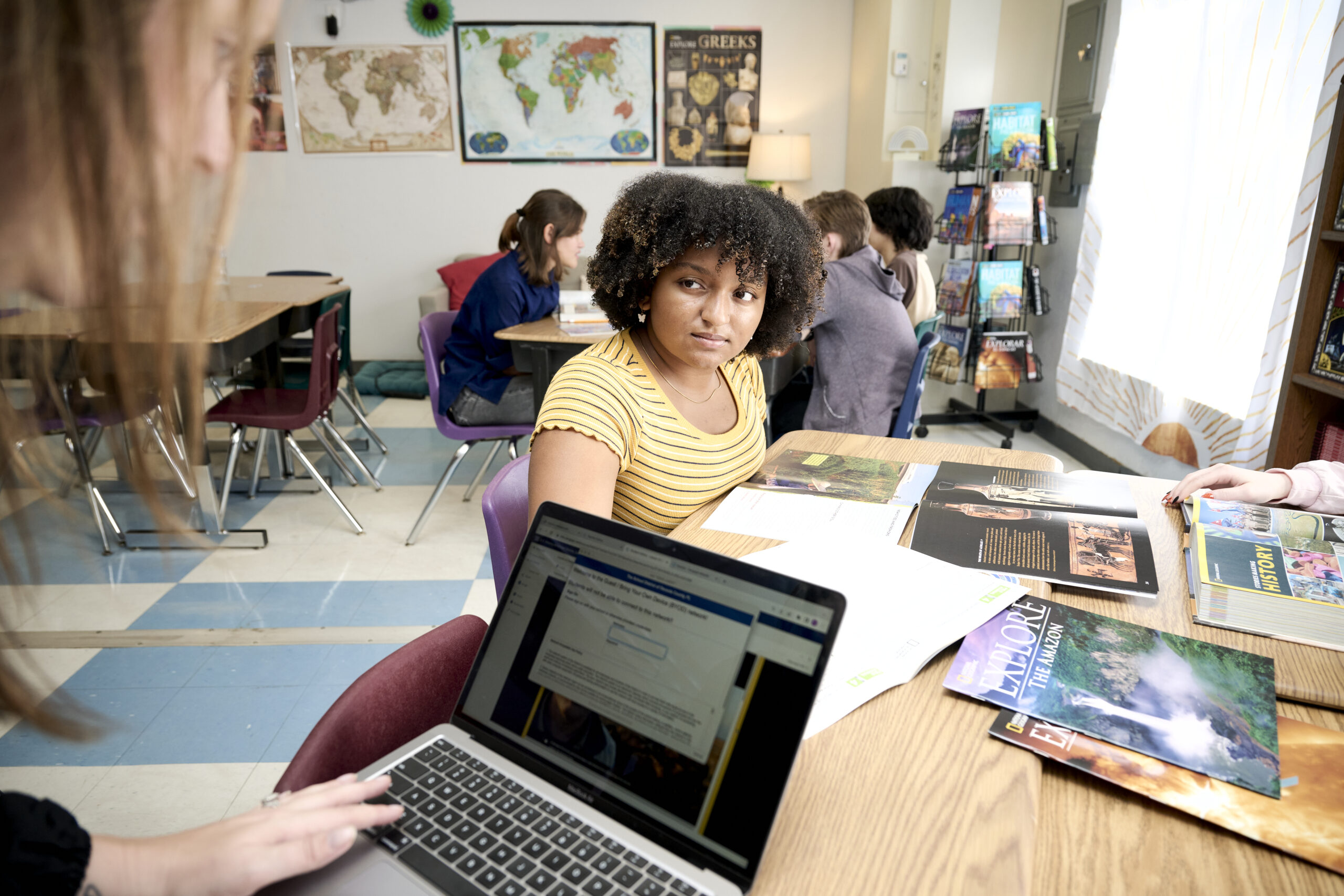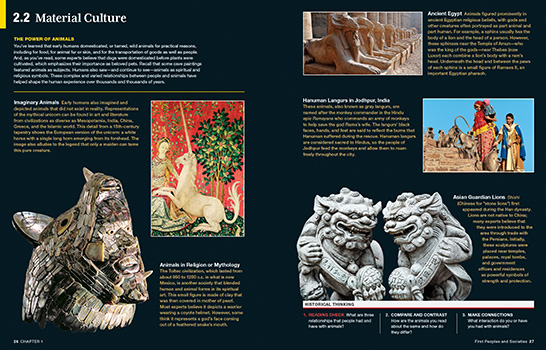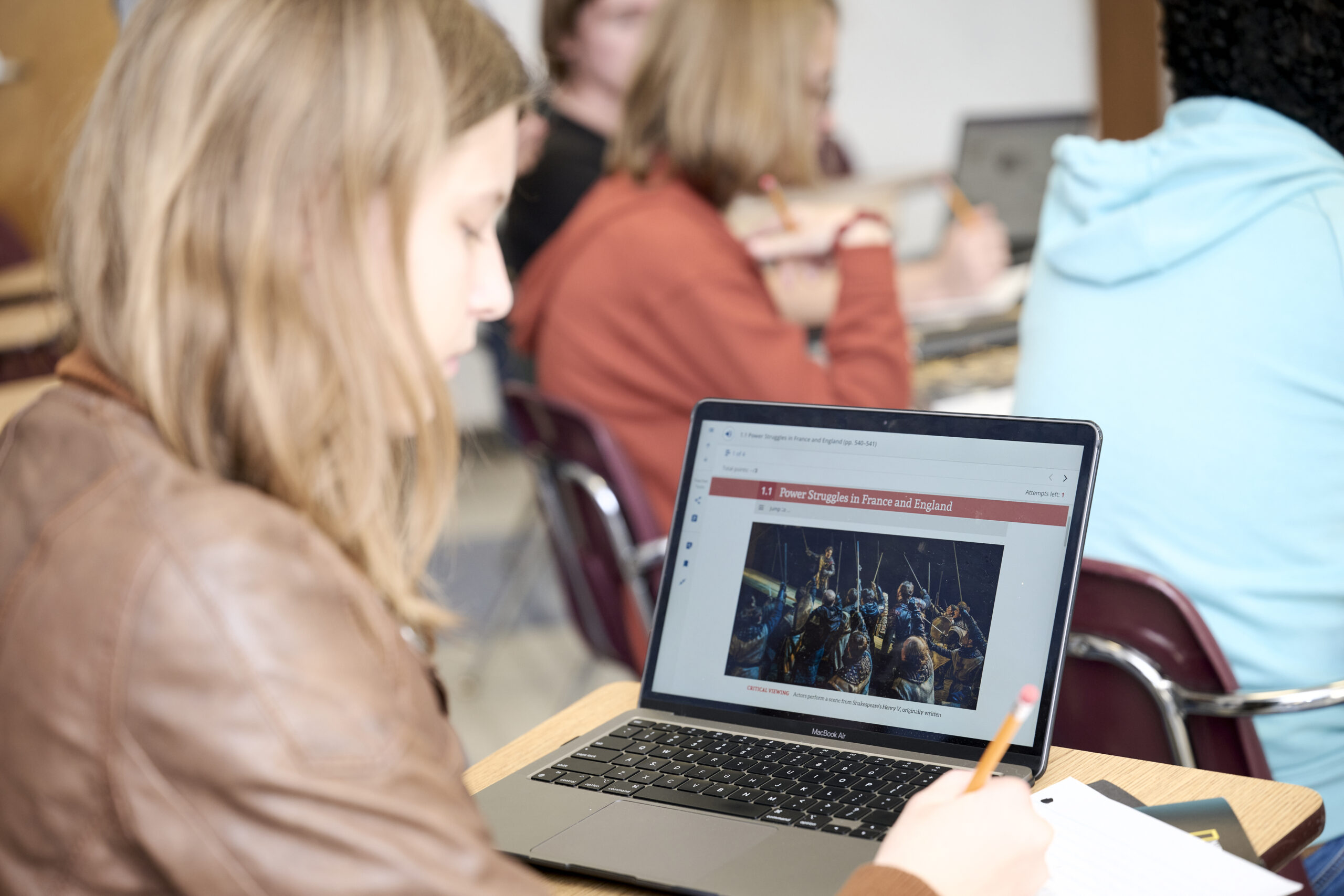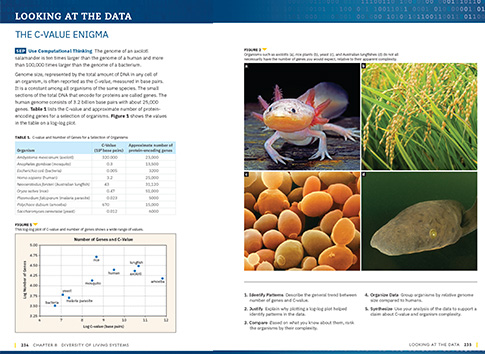Empowering the Next Generation: The Role of Visual Literacy in Education
Deborah McGinley
Associate Director of Product Marketing • National Geographic Learning | Cengage
Declining scores from the National Assessment of Educational Progress (NAEP) for U.S. History and Reading within primary education have ignited concerns among educators, policymakers, and parents. According to The Nation’s Report Card¹‚² a government website, the average U.S. history and reading scores for eighth graders across the United States are down 9 points since 2014. This trend not only highlights the challenges in traditional pedagogical approaches but also demands innovative strategies to engage students and enhance learning outcomes. From within this educational dilemma, visual literacy may offer new hope to revitalize student engagement and comprehension in history and literacy education.

NAEP scores suggest that students are struggling to grasp and retain content delivered through conventional text-based instructional methods.
The Power of Visual Literacy
NAEP scores suggest that students are struggling to grasp and retain content delivered through conventional text-based instructional methods. This decline reflects broader issues in literacy and comprehension, underscoring the need for a pedagogical shift to meet the diverse learning needs of today’s students. By interpreting, negotiating, and extracting meaning from information conveyed through images, visual literacy emerges as a compelling solution to tackle modern educational challenges. In an era dominated by increased digital media and visual communication, visual literacy equips students with essential skills for navigating and interpreting diverse forms of media. It prepares them to be discerning consumers and producers of visual content, bridging the gap between academic learning and real-world application.
Creating a Multimedia Approach
The transformative potential of visual literacy extends deeply into enhancing comprehension and engagement within education. It has the power to make complex historical concepts more accessible and engaging with the use of visual aids such as images, charts, maps, and timelines. By incorporating visual storytelling methods, including documentaries and virtual reality experiences, educators have the tools to bring history to life in the classroom. These approaches can foster a deeper connection and understanding among students, transcending traditional text-based learning methods and tapping into the visceral power of visual narratives.

The use of visual aids makes complex historical concepts more accessible and engaging.

Students become more confident in critical analysis by learning to decode the visual information presented to them.
Developing Visual Skills
This approach not only enriches the educational experience by making learning content more relatable and understandable, but it also encourages a more active and immersive experience with the material. As students become more visually literate, they not only learn to decode the visual information presented to them but also gain the ability to critically analyze and question the content, leading to a more nuanced understanding of the world around them. This skill set is invaluable in preparing students to navigate the complex visual landscapes of both the digital world and their everyday lives, making visual literacy a critical component of modern education.
Promoting Critical Thinking and Creative Expression
The integration of visual literacy into educational practices serves as a powerful mechanism for promoting both critical thinking and creative expression among students. By engaging in critical analysis of visual sources, students are encouraged to question the authenticity, bias, and context behind images. This fosters critical thinking skills that extend beyond basic observation to a deeper understanding of the information presented to them. Such analytical skills are invaluable, not just for enhancing historical understanding but also for providing students with the ability to navigate the vast array of visual information they encounter daily. This approach to learning cultivates a more discerning and thoughtful engagement with both academic content and the wider world of media.

Students are encouraged to question the authenticity, bias, and context behind images by engaging in critical analysis.
Reflecting Viewpoints with Multimedia
Visual literacy also empowers students to express their own ideas and perspectives through the creation of visual content. By undertaking projects that involve designing their own infographics, creating historical reenactments, or developing multimedia presentations, students are not only learning about history or literature; but they are also becoming creators of content that reflects their understanding and viewpoint. This aspect of visual literacy encourages active learning and creativity, allowing students to take ownership of their educational journey and to present their knowledge in innovative and engaging ways.

Students become more confident in critical analysis by learning to decode the visual information presented to them.

An educator’s role involves developing students’ abilities in interpreting, analyzing, and creating visual content.
The Role of Educators
Educators play a crucial role in enhancing visual literacy to counteract the decline in NAEP US History and Reading scores. Their role extends beyond simply incorporating visuals into teaching; it involves a comprehensive approach to develop students’ abilities in interpreting, analyzing, and creating visual content. Through skillfully integrating visual resources into the curriculum, educators can make complex subjects more accessible and engaging, fostering deeper understanding and better retention.
Visual Literacy as a Core of Teaching Strategy
By adopting visual literacy as a core teaching strategy, educators can offer a more dynamic, inclusive, and effective educational experience, addressing the challenges of traditional text-based methods. These efforts aren’t just about enhancing traditional learning but also about preparing students to critically evaluate and engage with the mountain of visual information they encounter daily, a skill increasingly essential in today’s visually-saturated digital age.
References
1. NAEP report card: 2022 NAEP U.S. history assessment. (n.d.) The Nation’s Report Card. Retrieved from https://www.nationsreportcard.gov/highlights/ushistory/2022/#sample-questions
2. NAEP report card: Reading. (n.d.). The Nation’s Report Card. Retrieved from https://www.nationsreportcard.gov/reading/states/scores/?grade=8
The Samples You Want Without The Wait!
Copyright 2017 | National Geographic Learning Product News and Resources | AP® is a trademark registered and/or owned by the College Board, which was not involved in the production of, and does not endorse, this product. | “National Geographic”, “National Geographic Society” and the “Yellow Border Design” are registered trademarks of the National Geographic Society ®Marcas Registradas.
